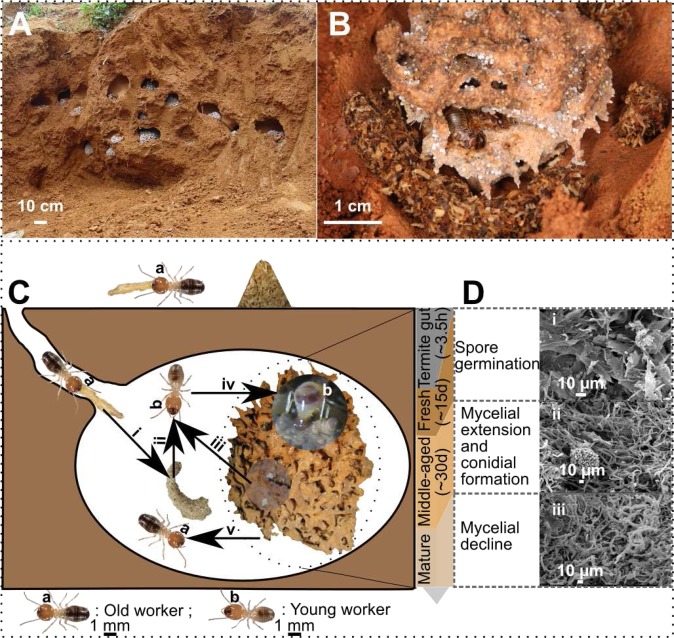Fig. 1.
The plant material food-processing pathway in fungus-cultivating termites. As dominant decomposers, an O. formosanus colony forms in subtropical China with massive fungus combs underground (A), which are made of various plant materials foraged by worker termites (B). Age-related labor division in food processing of fungus-cultivating termites (C). Old workers forage outside and transport plant materials back to nest and form a food store (i); young workers ingest the food store (ii), imbue them with the fungal nodules (that are rich in asexual Termitomyces spores) (iii), and use their feces to build fresh fungus combs (iv); old workers gain their nutrition by consuming the mature fungus comb (v). (D) The development of Termitomyces fungi in fungal comb: the poplar fungal comb has a cycle time of ∼45 d. The Termitomyces spores and plant materials rapidly pass through the gut of young worker (∼3.5 h) and form as fresh comb with the fast spores germination (i); after 15 d of growth, the middle-aged comb with dense fungal mycelia and fungal nodules (ii); and after 30 d more growth, the comb materials complete maturation and containing little recognizable mycelia (iii).

